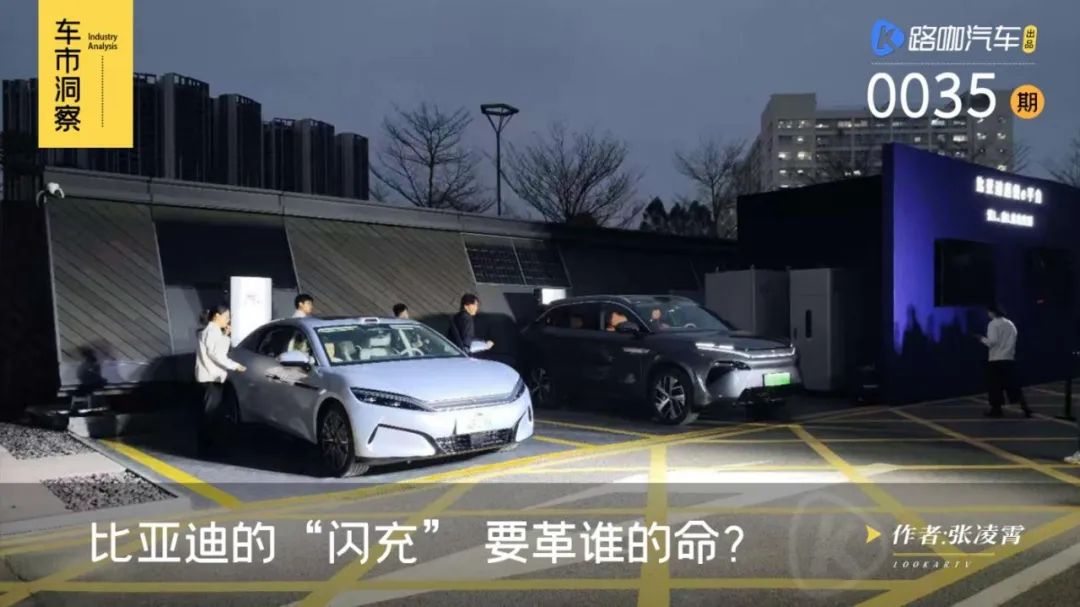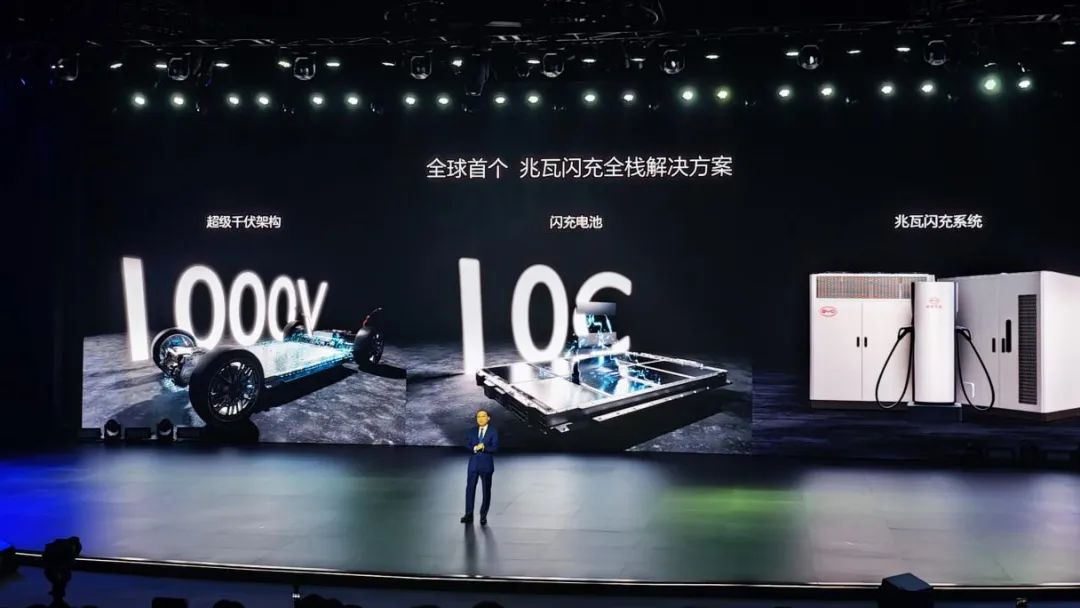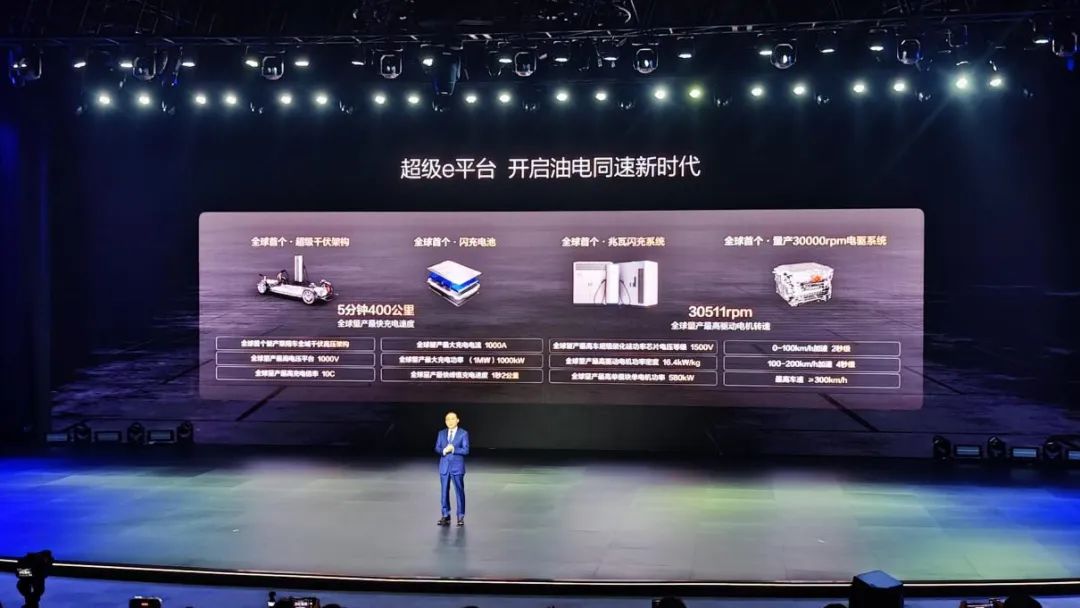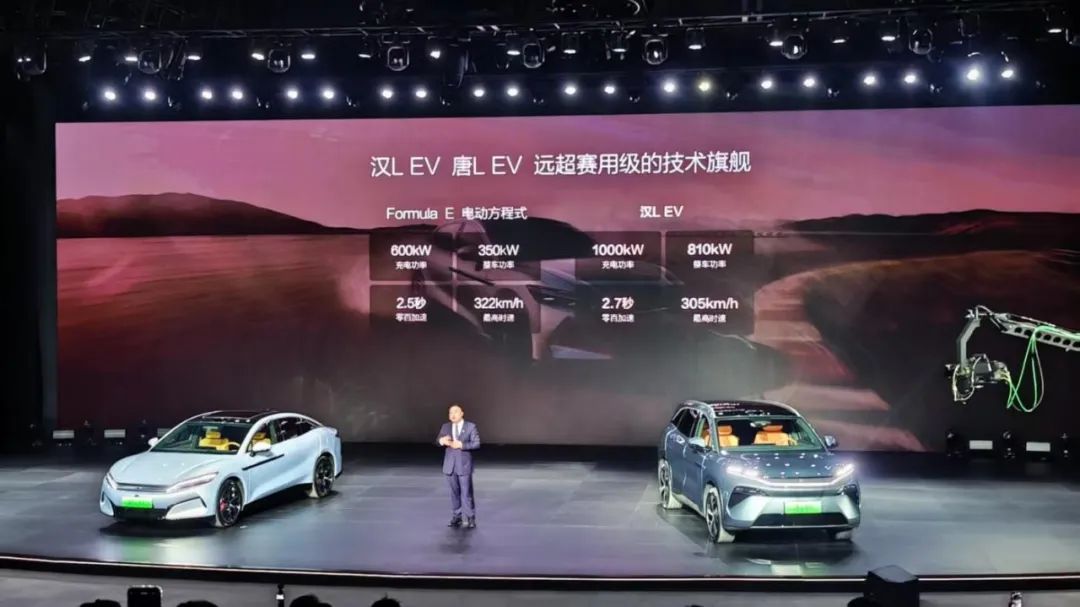BYD Unveils Megawatt Flash Charging: The Dawn of a New Era for Electric Vehicles
![]() 03/19 2025
03/19 2025
![]() 775
775

After igniting the trend of "Intelligent Driving for All" earlier this year, BYD has now set its sights on revolutionizing charging speed.
On March 17, BYD launched the Super e-Platform, heralding a comprehensive upgrade of its core electric components. Under the "All-Domain Kilovolt High-Voltage Architecture," the "Flash Charging Battery" achieves a maximum charging power of 1 megawatt (1000kW) in mass production. The Han L, equipped with this groundbreaking battery, can travel 400 kilometers with just 5 minutes of charging, making it comparable to refueling speeds.
Simultaneously, BYD unveiled the world's first mass-produced 30,000 RPM electric drive assembly, enabling the Han L EV to accelerate from 0-100km/h in a mere 2.7 seconds. Lu Tian, General Manager of BYD Dynasty Network Sales Business Unit, remarked that the Han L EV leaves fuel vehicles trailing: "The only one that can keep up is perhaps Mr. Lei's Xiaomi SU7 Ultra." On the day of the launch, BYD's share price surged to a new high, surpassing CATL's market valuation at 1.16 trillion yuan.
Just before BYD's announcement of its all-domain 1000V platform, an executive from another automaker had deemed "800V high-voltage platform + 5C fast charging" exclusive to luxury models priced at the 500,000 yuan level. Some netizens quipped that just as 5C was poised for widespread adoption, BYD's 10C arrived to steal the show.
Range anxiety will soon be a relic of the past.
Supported by ultra-high voltage of 1000V and ultra-high current of 1000A, BYD's flash charging battery achieves a maximum charging power of 1 megawatt (1000kW) in mass production globally. Notably, on a 1000V high-voltage platform, electric vehicles' power electronics must meet a voltage level of 1500V.
At the launch event, BYD announced the independent development and mass production of a new generation of automotive-grade silicon carbide power chips with a voltage rating of up to 1500V. Unsurprisingly, this marks the industry's first mass production and currently the highest voltage rating available.

Leveraging megawatt flash charging, BYD's electric vehicles can add 20 kilometers of range in 10 seconds, and a 5-minute charge provides 400 kilometers of range.
Prior to the launch event, images of BYD's self-built "megawatt flash charging" stations circulated online. At the event, BYD unveiled its independently developed world's first "All-Liquid-Cooled Megawatt Flash Charging Terminal System," boasting a maximum output capacity of 1360kW.
Currently, only BYD's self-built megawatt flash charging stations enable new vehicles to truly achieve "flash charging." Wang Chuanfu stated that BYD plans to build over 4,000 "megawatt flash charging stations" nationwide and open the "megawatt flash charging pile" technology to the entire industry.

Crucially, BYD employs intelligent boost technology, requiring no additional components beyond existing motors and electronic controls, to enable boost fast charging and ensure full compatibility with public fast charging stations. Furthermore, BYD's dual-gun charging technology transforms public charging stations into flash charging stations simply by plugging in two guns.
Compatibility is paramount. NIO's battery swapping system, for instance, equips a single battery swapping station with over three types of batteries for different models. Due to the lack of full compatibility between batteries and swapping stations, NIO's management capabilities have faced external scrutiny.
Once compatibility is addressed, widespread adoption is inevitable.
In reality, the key to charging speed lies not solely in the charging station but also in the vehicle itself. To achieve BYD's "flash charging," the prerequisite is a high-rate battery capable of supporting 1000kW, namely BYD's flash charging battery.
Put simply, ordinary power batteries cannot handle such rapid charging speeds. In comparison, Tesla's Supercharger stations achieve a maximum charging power of 250kW. Consequently, many electric vehicle owners report that even though 600kW liquid-cooled supercharging stations are nearby, they remain largely unused due to compatibility issues.
Thus, even if BYD fully opens up its flash charging technology, simply retrofitting existing charging equipment will not fully realize the "flash charging" potential.
However, this is merely the beginning. From the Qin PLUS priced at 99,800 yuan initiating a price war to this year's trend of "Intelligent Driving for All," BYD's every move compels competitors to follow suit. The same holds true for flash charging technology. As automakers compete on charging speed, "equal speeds for fuel and electric" vehicles are just around the corner.
Who Will "Equal Speeds for Fuel and Electric" Disrupt?
At the launch event, pre-sales for the Han L and Tang L models officially commenced. The pre-sale prices for the Han L and Tang L EV pure electric versions are 270,000-350,000 yuan and 280,000-360,000 yuan, respectively. Both models are based on the "Super e-Platform" and incorporate BYD's world-first super kilovolt architecture for complete vehicles, the world's first flash charging battery, the world's first megawatt flash charging system, and the world's first mass-produced 30,000 RPM electric drive system.
Lu Tian emphasized that the Han L and Tang L have virtually no comparable models in the home-use mass-produced vehicle segment. The peak power of a single motor in the BYD Han L reaches 500kW, while the dual-motor version boasts motor powers of 230kW and 580kW, respectively, equating to a total horsepower of 1,100 horses. In BYD's actual tests, the Han L EV accelerates from 0-100km/h in just 2.7 seconds and reaches a top speed of 305.56km/h.

To demonstrate performance, BYD benchmarked against the Xiaomi SU7 Ultra, which accelerates from 0-100km/h in 1.98 seconds.
As range anxiety fades into history, an inevitable question arises: will the countdown for fuel vehicles accelerate? How long can range extender technology serve as a "transition"?
Last year, domestic sales of plug-in hybrids and range extenders reached nearly 5 million units, marking an over 80% year-on-year increase and accounting for roughly 40% of sales in the new energy vehicle market. This has emerged as a new growth point for the automotive industry. According to data from the China Passenger Car Association, in January of this year, sales of plug-in hybrids stood at 298,000 units, a 51.3% year-on-year increase, while sales of range extenders were 73,000 units, a 11.3% year-on-year decrease. Monthly sales of plug-in hybrids were four times those of range extenders, and the sales gap between the two continues to widen.
In contrast, fuel vehicles appear to be experiencing a "rejuvenation" trend, with penetration rates exceeding 50% for several consecutive months, peaking at 58.5% in January. This ended a streak of five consecutive months where new energy vehicles held a market share exceeding 50%.
Furthermore, examining this year's new vehicle plans from automakers, besides brands primarily focused on range extenders such as Hongmeng Zhixing, Lixiang, Leapmotor, and Deepal Blue, mainstream automakers are also introducing range extender models, including the Lingke 900, Xiaopeng G01, Zeekr 9X, and the recently jointly developed GAC S7 by Huawei and GAC Motor, all priced above 200,000 yuan.
Correspondingly, in the mid-to-high-end market, selling pure electric vehicles is becoming increasingly challenging. Terminal sales data reveals that in the medium/large vehicle market, sales growth for plug-in hybrids and range extenders is significantly higher than that of pure electric vehicles. Notably, entering 2024, this growth rate has accelerated substantially, with notable year-on-year increases. The market share of plug-in hybrids and range extenders in this segment has expanded from around 20% to 35%.

The Han L and Tang L, the new models featuring BYD's flash charging technology, have pre-sale prices in the 200,000-300,000 yuan range, offering both pure electric and plug-in hybrid versions. Lu Tian stated at the launch event that only the Xiaomi SU7 Ultra can keep pace with the Han L. The Xiaomi SU7 Ultra, with a starting price exceeding 500,000 yuan and an annual sales target of 10,000 units, achieved this target in less than a month.
BYD's decision to launch its new super technology platform on the Han L and Tang L underscores its readiness for battle. With Xiaomi SU7 already selling over 20,000 units per month, will monthly sales of 30,000 units be considered a success for the Han L and Tang L? Imagine that by then, the situation where the mid-to-high-end new energy market is "dominated" by range extenders will be reversed.







